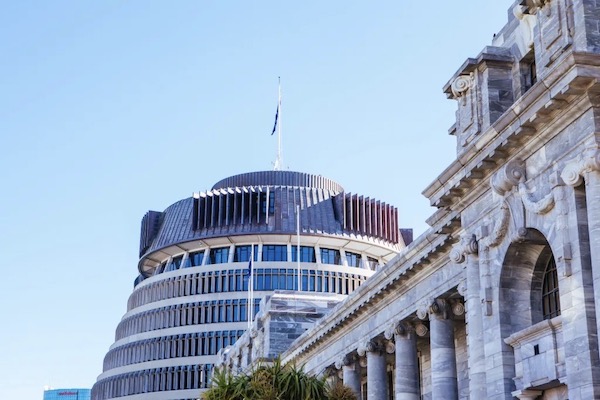Published on the 02/10/2025 | Written by Heather Wright

Deputy GCDO outlines the plans so far…
A major change to New Zealand government IT procurement is about ‘coordination, not command and control’, with the promise of improved digital services and savings of up to NZ$3.9 billion over the next five years.
The plans announced last week will see procurement of major IT projects centralised under the Government chief digital officer who will act as the government’s chief technology officer and lead digital investment and procurement decision making on behalf of most public service agencies and Crown entities.
“[The current system] incentivises big-bang, multi-year projects, rather than incremental, iterative delivery and misses opportunities for the reuse of digital assets across the system.”
Myles Ward, deputy secretary digital services and deputy GCDO, told iStart the previous system of agencies undertaking investment and procurement independently has created duplication and disconnected systems and does not support a joined-up approach to service delivery. It also misses the opportunity to achieve significant economies of scale, wastes resources and drives up costs.
Each agency has their own systems, their own applications and their own points of connection with the customer, Paul James, GCDO says. “It’s fragmented for New Zealanders and it’s expensive as a result.”
In addition, Ward says, the public sector investment system is not well optimised for digital.
“It incentivises big-bang, multi-year projects, rather than incremental, iterative delivery and misses opportunities for the reuse of digital assets across the system.”
Ward says the changes give the GCDO the mandate to ‘direct the traffic’ across government’s investment and procurement pipeline.
“This will allow us to make smarter investment decisions as a coordinated public service to drive efficiencies, consolidate government’s digital footprint and join up services.”
Ward’s well placed to talk government systems. While he only took on the role of deputy government chief digital officer and deputy secretary digital services for the Department of Internal Affairs in May, he’s previously been the CTO for Inland Revenue, worked with the NZ Defence Force and was CEO of healthAlliance, one of the country’s largest shared services organisations. He’s also been CEO of Cogent NZ and a contract consultant with PwC among other roles.
He says de-duplication and economies of scale are expected to bring savings across multiple categories of digital and ICT, but particularly corporate systems and service delivery systems.
The GCDO’s existing centralised procurement work has already saved between 12-14 percent per annum on digital procurement costs. Government figures show that since 2017, the GDCO’s digital procurement function has saved around 14 percent – or $800 million – across a total spend of $5.6 billion, with savings of $120 million across FY23/24’s $1 billion spend.
Countries including Singapore and Estonia have already embraced a centralised approach to digital government, with some jurisdictions seeing cost savings of up to 30 percent, depending on the maturity of their programs, the scope of digitisation and the level of enforcement and compliance.
“GCDO estimates that replicating these centralised approaches could therefore achieve savings of 15-30 percent across governments $13 billion five-year digital investment pipeline,” Ward says.
But he’s clear that the new direction is about coordination, not command and control, and agencies will retain key decision making rights in areas of less commonality such as specialist systems relating to unique agency functions.
“We’re not moving towards a fully centralised model. Instead the GCDO will narrow agency choices and intervene in decision making where it makes sense and where it can deliver the greatest impact, savings and benefits.”
A Digital Government Target State will serve as a ‘guiding star’ with agencies required to align their digital investment and procurement activity towards it.
“The Target State will identify the technologies that agencies should use instead of always procuring their own, to reduce costs and enable secure, joined-up digital services,” Ward says.
Buy local. Buy AI.
There’s some possible good news for local IT providers too, with Ward telling iStart the GCDO is committed to providing opportunities for innovation and partnering with the New Zealand private sector/industry for wider economic benefits.
Documents show 57 percent of the $1 billion 2023/24 spend through the GCDO’s existing procurement function – the All of Government Portfolio – went to New Zealand-owned businesses.
Ward holds up the recent appointment of Kiwi tech vendors Dave Clark NZ and Mattr for the government app, as an example of that ‘commitment’ to local suppliers. Dave Clark NZ is building the core government app, while Mattr will supply the digital wallet technology that underpins the app’s credential and wallet features.
That app and payment system is part of the plan to streamline public service IT, delivering key reusable digital system assets such as the government app, digital identity, secure messaging, payments, data exchange and AI toolsets.
“Instead of everyone building a payment system, well, we have one,” Ward says. “[When we look at digital identity or a government app, we’ll have one government app, one wallet, one issuance platform, a common capability that agencies will design to and utilise.”
Exactly how the approach will all come together is still to be defined in full, with Ward saying they’re still working through details around operationalising the new direction.
The Digital Government Target State will, however, be a key mechanism for how the GCDO works with agencies on their plans.
“There are a lot of details to work through to understand what this looks like in practice and we will work through this carefully, pragmatically and iteratively.”
When it comes to balancing system-wide efficiencies with individual requirements of agencies, Ward says the focus will be on the areas of greatest commonality, rather than specialist systems.
“In some cases, such as with the Digital Wallet planned for the Government App and other key digital system assets, there only needs to be one solution across government.
“In other cases/categories of digital, we may need a small range of solutions and systems. For example, we might have one case management system shared across one group of agencies in a similar sector, and another case management system for another sector.
“And in some cases, agencies will have specialist needs that are not shared by other agencies,” he says.
“We are working carefully through different categories of digital/ICT for government and identifying where they sit on the continuum from more to less consolidated. This will enable us to strike the balance between system-wide efficiencies and individual agency requirements.”
And yes, AI does feature in the GCDO’s plans.
Ward says AI offers opportunities for increasing efficiencies and productivity across government.
“We are factoring this into the heart of our thinking about the future of digital government and digital service delivery,” he says. “AI is key to our approach to digital transformation and will be a critical component of the Digital Government Target State.”
But that, as they say, is for another story.
Cabinet is due to report back in December, with further details likely to be revealed in early 2026.



























